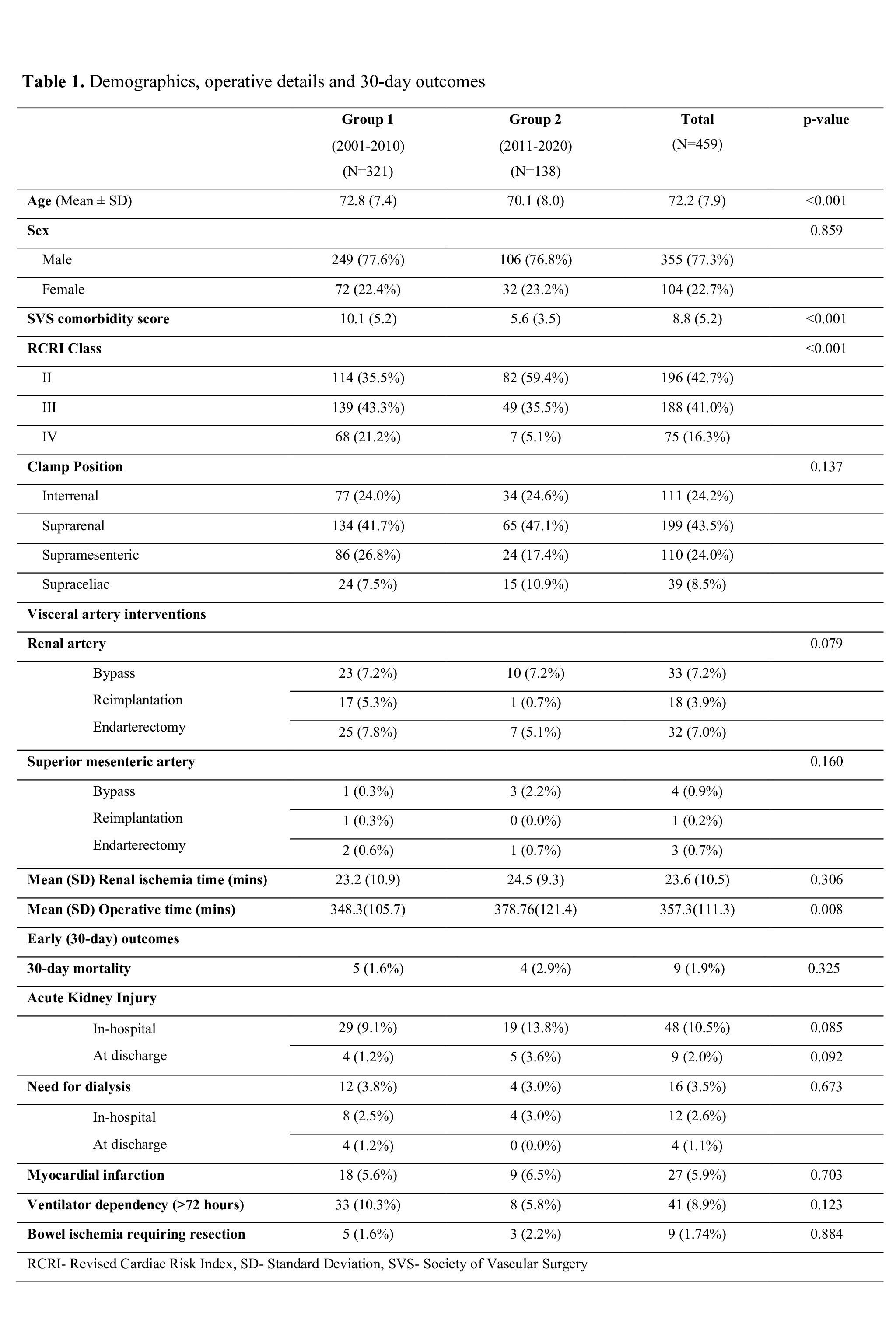OBJECTIVE: Advanced endovascular technologies have provided lower risk alternatives for repair of juxta/pararenal aortic aneurysms (PAAA) with resultant decreasing experience with open repair. The latter is now relegated to patients with complex renal/visceral anatomy. We sought to determine contemporary patient characteristics and early outcomes for primary open repair of PAAAs.
METHODS: Data from consecutive patients undergoing open PAAA repair requiring clamping at least above one main renal artery between 2001 to 2020 were retrospectively reviewed. Emergent, stent graft explant and thoracoabdominal repairs were excluded. Patient demographics, operative details, and early outcomes were recorded. Postoperative acute kidney injury was documented using RIFLE (Risk, Injury, Failure, Loss, End-stage disease) criteria. An overall analysis and comparison between two groups during separate time periods (Group 1: 2001-2010, Group 2: 2011-2020) was conducted.
RESULTS: We identified 459 patients undergoing open PAAA repair with 321 in Group 1 and 138 in Group 2. Average number of repairs per year was 32.1 for Group 1 vs 13.8 for Group 2. Patients in Group 2 were significantly younger (70.1 vs 72.8 years), with lower co-morbidities (RCRI class IV 10.7% vs 21.1%; SVS comorbidity score 5.6 vs 10.1 (p<0.001). Table 1. Proximal aortic clamp positions, incidence of renal / visceral intervention and renal ischemia times were not significantly different between groups. Total operative time increased from Group 1 to Group 2, 348.3 vs 378.6 minutes. Nine patients died within 30 days (1.96%); mortality was similar between groups (1.6% vs 2.9%). Overall incidence of postoperative kidney injury and need for inpatient dialysis were 10.5% and 2.6% respectively, at discharge were 2.0% and 1.1%, not significantly different between groups. Risk factors associated with early mortality included older age and higher SVS comorbidity score. Need for dialysis was associated with longer visceral/renal ischemia times (p=0.03/p<0.001), and concomitant renal artery interventions (p<0.001).
CONCLUSION: Incidence of open repair of PAAA has decreased following maturation of complex endovascular techniques. However, overall early outcomes remain excellent and comparable to the pre-endovascular period, likely benefiting from patients with decreased comorbidities. Poor outcomes are driven by older, high-risk patients with prolonged organ ischemia time. 